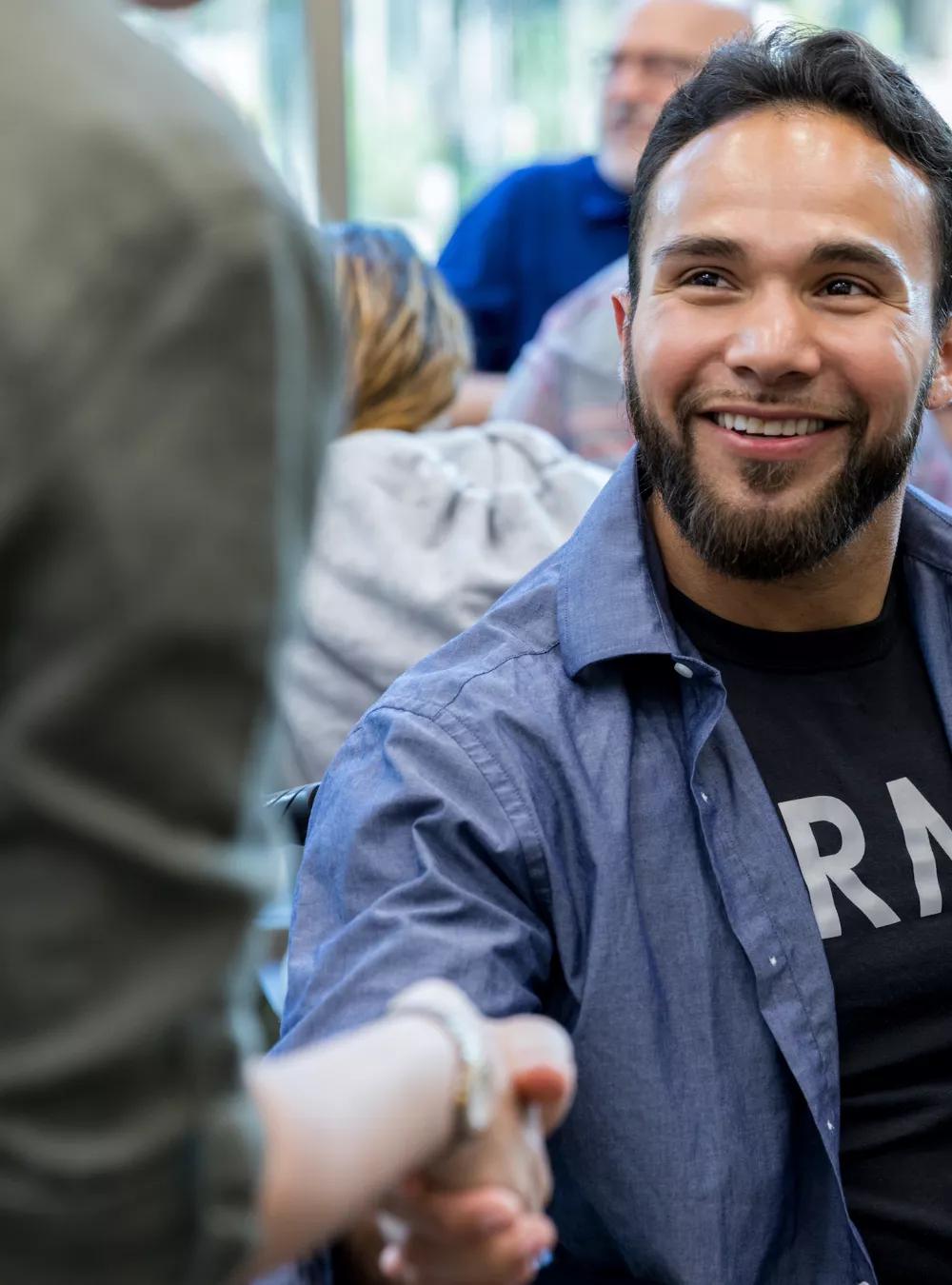MITRE’s design thinking approach aims to improve veterans’ transition experience by reducing social isolation. It's a potentially life-saving intervention.

Can Increasing Social Connectedness Lower the Veterans' Suicide Rate?
With 17 veterans on average taking their lives every day, the veterans’ suicide rate runs 1.5 times higher than for those who never served—2.5 times higher for women.
As the nation reels from this grave reality, the White House, Department of Defense (DoD), and Department of Veterans Affairs (VA) have made the issue a top priority. These organizations are expending extensive resources to prevent suicidal ideation from becoming tragic action.
Yet across the range of programs working this problem, high veteran suicide rates persist, across demographics. More than 60,000 veterans succumbed to suicide over the past decade.
This raises complex questions: What are we missing? What are the unmet needs? And how can we uncover these needs, to reduce the veteran suicide rate?
The reality is the problem is big—far too big for any one organization to tackle. With strong relationships across the VA and DoD, MITRE’s addressing this as a whole-of-community problem. And we're including veterans themselves in the hunt for answers.
Designing Solutions with, Not for
"Our takeaway from all this is that what we are doing is not working,” said Chanin Nuntavong, national director of veterans affairs and rehabilitation for the American Legion. “Everyone has been focused on this, but we’re not seeing results.”’
We're hoping to change that. The MITRE Innovation Program’s Design for Life team is applying a design thinking approach to identify the unmet needs contributing to the problem of veteran suicide.
Design thinking applies empathy, creativity, and immersion in the problem. It engages veterans themselves in developing sustainable solutions. The approach increases the likelihood that healthcare providers, service organizations, and at-risk veterans will leverage solutions.
The project’s principal investigator, Awais Sheikh, says, “Designing solutions with veterans is far more effective than designing solutions for veterans.”
The Design for Life team focuses on intervening well upstream of the moment of crisis—long before the point of suicidal ideation. The Centers for Disease Control and Prevention identified social connectedness as a key factor in preventing veterans’ suicide. This involves how people’s relationships facilitate their wellbeing.
For veterans leaving their “tribe” behind, their sense of camaraderie, belonging, and purpose can change drastically after separation. And many find it difficult to adapt.
“It’s a different world after leaving the service,” says Tammy Freeman, one of the Design for Life project leads. “So how do veterans navigate that? What do their support systems look like?”
Freeman says the project’s research can help DoD, VA, and veterans’ organizations to ask better questions, challenge assumptions, and give credibility to the need for fostering a strong social network.
Re-envisioning the Military-to-Civilian Transition Journey
To that end, MITRE’s research focuses on transition and helping veterans find a new mission in civilian life.
From workshop sessions to talking to people at large, our team gathered data from a diverse population of veterans. This allows us to understand their experiences and turn the data into criteria that facilitate a sustainable solution.
For example, our approach is being used in partnership with the Office of Personnel Management’s (OPM’s) Lab for innovation. MITRE and OPM looked for ways to apply design thinking to improve the VA Community Provider Toolkit and inform its redesign.
The toolkit serves as a resource for healthcare providers screening veterans for mental health concerns. By measuring the impact of applying design thinking on the tool, we aim to show design thinking’s potential impact on similar veteran-centered efforts.
Moving forward, our team is focused not just on the moment of transition out of service. We’re considering points of transition throughout the service journey. This could begin soon after enlistment.
Building Bridges to Save Lives
The Design for Life team discovered that veterans derive social connectedness from various places. Many do so through veteran community service organizations, such as Team Rubicon and The Mission Continues. Such organizations help address veterans’ needs to stay connected through the element of giving back. Based on this, we’re working with these groups to inform and improve their services.
We’re also engaging academia. This includes the University of Texas San Antonio, with one of the largest veteran populations among their students. In collaborating widely to attack the problem, we can partner further with government, local organizations, and possibly even employers of large veteran workforce segments.
“It’s really a shared, whole-of-society effort,” Sheikh says. “And of course, there's no single answer to such a complex—and devastating—problem.
"But the more we can build bridges across federal, state, local, and non-profit organizations, the more we can make a difference—and ultimately save lives.”
—by Denise Schiavone